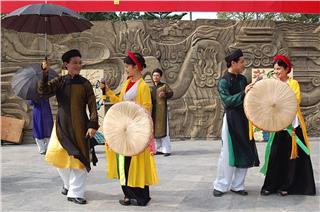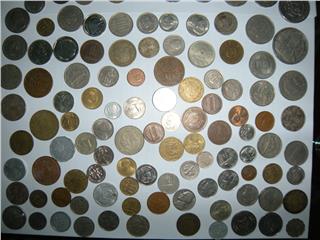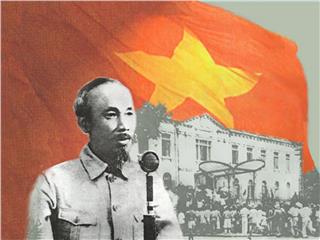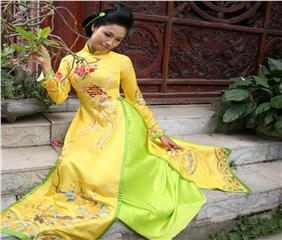Fri, 23 Jan 2015 . Last updated Mon, 01 Jun 2015 14:19









Images of conical leaf hats (Non la) have been attached to physical and spiritual life of Vietnamese people. They protect people against sunstroke and rain while they work in the field, peddle things at noon or go to the crowded market. Conical hats have gradually become a part in the mind of Vietnamese people and are used by all walks of life. Although time goes by, images of these hats stay attached to industrious mothers and create the typical feature of Vietnamese markets. In particular, conical hats are tied to the life of Vietnamese women. When wearing the hats, they look more charming and elegant.
Vietnam is an agricultural producing country. Because of its tropical monsoon climate, the country has much rainfall and sunlight. Vietnamese people began making hats from leaves to protect themselves from sun and rain a long time ago. That’s possible the reason why images of hats were carved on Ngoc Lu bronze drum or Dao Thinh bronze jar dated back to 2,500 – 3,000 years ago. The shape of conical hats has changed over the time. In the past people wore such kinds of hat as solider hats, flat palm hats with fringe and so on and today, they make conical hats in Chuong village and thin hats with a poem embedded inside in Hue.
In addition, Vietnam has many ethnic groups. Different features of their hats make up the diversity of Vietnamese hats. That’s why each hat has its own significance and traditional hats of Vietnam are the best evidence of a rich culture. Despite all ups and downs of life, hats preserve their role in daily life of Vietnamese people and in their fight against invaders. Their values remain unchanged in poems, songs, folk verses and hats are close companions for Vietnamese people in all journeys.
People make conical leaf hats across Vietnam. However, their products have their own features due to different geographic conditions and customs of their locality. Conical hats of Northern people are firm and durable while those of Hue people express the elegance of women and the conical hat in the South are often worn by girls in “ao ba ba” (Vietnamese pyjamas) while they row a boat on the river. And it’s impossible to talk about conical leaf hats without mentioning hat making villages. From these craft villages, conical leaf hats carry their mission: becoming a cultural feature for the locality.
Chuong village and Hue are two most famous places for hat making craft. Just come to Chuong village to taste nice food and wear good hats. As we can see in these folk verses, good hats are the most typical products of Chuong village. Because Northern people earn their living by farming, conical hats protect them from rain and sunstroke when they work in the field. While normal conical hats have 20 conical circles, those made in Chuong village only have 16 ones. When these rings are completed, they’re arranged into the farmland then covered with leaves. In particular, a layer of bamboo sheath is inserted between two layers of leaves. Thus, they’re heavier than hats in other localities.
Together with covering hat frames with leaves, sewing these leaves is another step that determines how a hat would look. It requires much adroitness and a sewer is often compared with an embroiderer. Stitches on a hat are almost the same. And hat makers in Chuong village are so skillful that they can hide all thread ends, leaving a hat with perfect look. In the end, girls use colorful threads to decorate the hat and create places to tie a strap which is often a strip of silk.
Unlike conical hats in Chuong village, poem hats in Hue are thinner and more elegant. Images of the Huong River, Ngu Mountain, Trang Tien bridge or poems are unveiled when the sunlight goes through the hats and they’re like pieces of artwork and words of love. Perhaps the poem conical hats are considered typical products of hat making craft of Hue because they carry the beauty of this land. These hats stand out because of their thinness, lightness and elaboratedly-cut shapes between layers of leaves. Therefore, poem conical hats are often worn by girls or women when they go to the pagoda.
Together with other pieces of clothing like “ao dai”, blouse and silk belt, conical leaf hats are considered traditional costumes of Vietnamese women and the most beautiful headgear. Conical hats make women of all times more elegant and charming and these hats even become items for young people to exchange love. This is a silver hat with fringe. That’s why I give it to you, dear. Conical leaf hats aren’t used frequently in daily life but they seem to carry more emotional values. They’re depicted in poetry, photography and painting and used on the stage. Because they’ve come into the mind of Vietnamese people, conical leaf hats become a typical feature of Vietnamese culture.
Created by the preceding generations, conical leaf hats carry the soul of our nation. Over the time, they may be used less frequently but their role remains unchanged in Vietnamese people’s life. They’re attached to women and depicted in folk verses. Moreover, there are people who spare no efforts to preserve the traditional craft of making conical leaf hats. Pham Tran Canh have made conical leaf hats with fringe and restored ancient hats over the past 20 years. Although, he’s 86 years old and his health isn’t as good as it used to be, he’s keen on making hats. As for him, maintaining hat making craft contributes to preserving Vietnam culture and the soul of the village. As such, conical leaf hats remain a part of his homeland.
Source: VTC10 - NETVIET

 Đặt vé máy bay cho người Việt?
Bấm vào đây
Đặt vé máy bay cho người Việt?
Bấm vào đây
Our service uses cookies for technical, analytical and marketing purposes. See our Cookie và Privacy policies for more information. If you agree to this, just keep browsing.


